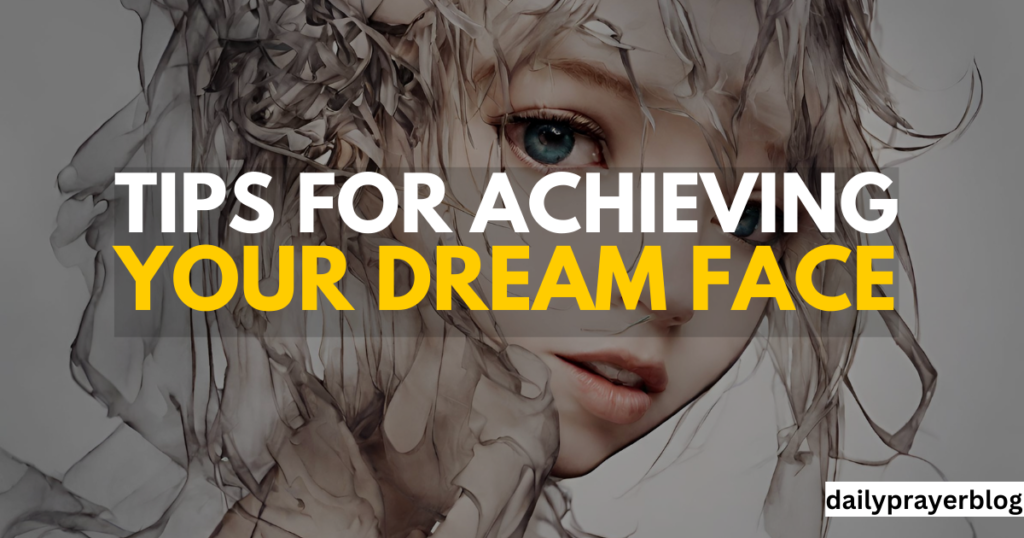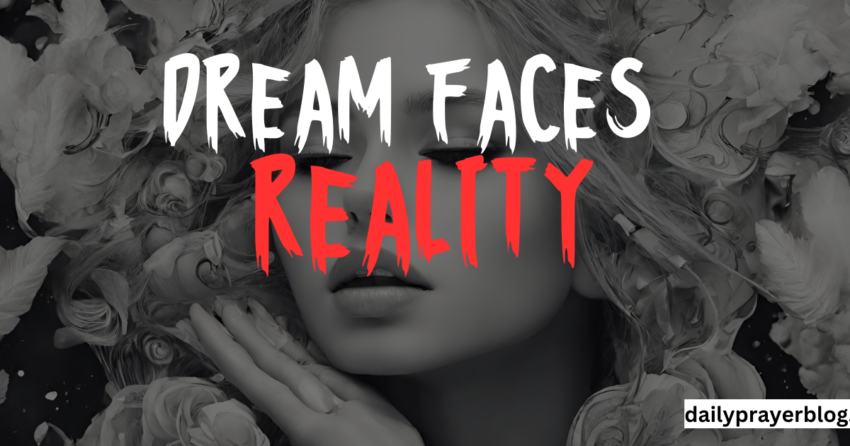Have you ever woken up from a dream, your mind still tingling with the image of an unforgettable face? A face so perfect, so captivating, it felt like staring at a masterpiece? That, my friends, is the allure of the dream face: a vision of beauty whispered to us by the depths of our subconscious. Let’s find out the reality behind the dream face.
For years, philosophers and dream analysts have pondered the significance of these fantastical visages. Are they reflections of our deepest desires? Manifestations of societal beauty standards? Or perhaps, windows into cultural variations we haven’t even acknowledged? In this exploration, we’ll delve into the fascinating world of dream faces, uncovering their psychology, cultural influences, and even the science behind their formation.
Find the Significance of Dream Faces
While a dream face might appear out of the blue, its presence often holds hidden meaning. Psychologists suggest it can be a reflection of our aspirations, embodying the qualities we admire or secretly wish to possess. Maybe it’s the confidence of a celebrity, the kindness of a loved one, or even the fierce strength we see in ourselves.
But the influence of societal beauty standards can’t be ignored. Magazines bombard us with airbrushed ideals, shaping our perception of what’s “attractive.” So, it’s natural for these idealized features to creep into our dreams, whispering their definition of beauty.
Across Cultures: A Kaleidoscope of Dream Faces
Did you know that dream faces aren’t universal? Cultural background plays a huge role in shaping what we find beautiful. In some cultures, symmetrical features and pale skin might be the epitome of attractiveness, while others might value larger eyes or darker complexions. This diversity showcases the beauty in subjectivity, reminding us that true beauty lies in appreciating differences.
Dream Faces in the Age of Filters
Social media, with its endless parade of perfectly filtered faces, has further complicated the dream face equation. Now, we’re not just comparing ourselves to airbrushed magazine models, but to digitally enhanced versions of reality. This constant bombardment of unrealistic beauty standards can fuel dissatisfaction with our own appearance, making the pursuit of our dream face feel impossibly out of reach.
The Neurology of Dream Faces
But what’s happening in our brains when we dream of these captivating faces? Studies suggest that dream faces are often formed by merging familiar features from people we know. Our brain takes bits and pieces from friends, family, celebrities, and even strangers, and assembles them into a composite portrait of ideal beauty. This explains why your dream face might look strangely familiar, even if you can’t quite place it.
Tips for Achieving Your Dream Face

So, how do we navigate this complex world of dream faces and find contentment with our own features? The key lies in embracing self-acceptance. Instead of chasing unrealistic ideals, focus on healthy habits that nurture your skin and overall well-being. Remember, true beauty radiates from within, fueled by confidence and self-love.
Addressing Dream Face Misconceptions
Don’t fall prey to harmful misconceptions surrounding dream faces. Unrealistic expectations can lead to anxiety, depression, and even unhealthy cosmetic procedures. Remember, your worth is not defined by your appearance. Find happiness in your unique qualities, and prioritize mental health above all else.
Celebrity Facades: The Truth Behind Dreamy Personas
While celebrities might seem to embody the ultimate dream face, it’s important to remember that their appearances are often meticulously crafted by teams of stylists and makeup artists. Don’t compare yourself to these carefully constructed images. Real beauty is found in authenticity and individuality, not curated perfection.
Transformations or Traps? Cosmetic Procedures and Dream Faces
Some might seek to sculpt their dream face through cosmetic procedures. While these options can bring desired changes, it’s crucial to approach them with caution. Research risks and potential complications, and prioritize realistic expectations over drastic alterations. Remember, true beauty lies in embracing your unique features, not molding yourself into someone else’s idea of perfection.
The Heart of the Matter: Dream Faces and Emotional Well-being
Our sense of self-esteem is deeply intertwined with how we perceive our dream face. Feeling dissatisfied with your appearance can significantly impact your emotional well-being. Therefore, it’s essential to cultivate self-acceptance and appreciation for your unique beauty.
Beyond Beauty: Dream Faces as Self-Expression
Think of dream faces not just as physical ideals, but as canvases for self-expression. Artists across cultures have been portraying dream faces for centuries, using them to explore themes of identity, desire, and transformation. Let your dream face inspire you to express your feelings.
Conclusion:
The pursuit of a dream face can be a captivating journey, leading us to explore the depths of our desires, confront societal pressures, and ultimately, discover the true meaning of beauty. Remember, your worth shines from within, not from chasing fleeting ideals. Embrace your unique features, nurture your well-being, and let your inner light radiate, because the most captivating face is always the one that is authentically you.
Also Read: 15 Spiritual Meanings of Dream About Spiders
747 Angel Number (Meaning, Love & Money)
7 Swords of St Michael Prayer: Embracing Divine Protection and Guidance
